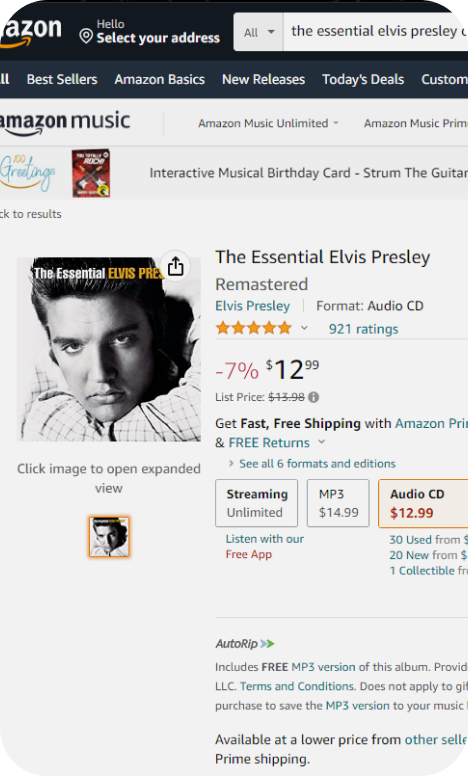Product discovery principles are fundamental elements that drive successful digital product development and allow teams to stay focused and aligned during the product discovery process.
These principles guide you throughout the world of product and customer insights, help to navigate and validate new ideas efficiently and build a road towards creating a product that customers love.
So, let’s take a look at some of the key principles behind building game-changing products and see examples of how they should be applied.
7 Key Product Discovery Principles

- Don’t be afraid to fail
- Validate problems
- Stay user-centered
- Include competitor analysis
- Continuous customer feedback collection
- Cross-functional collaboration
- Iterative experimentation
1.Don’t be afraid to fail
The key in product discovery is to embrace all ideas and not be afraid to get proven wrong. Not all of your concepts, hypotheses or even prototypes will be equally successful and that’s okay. By failing you learn what works and what doesn’t and each time move one step closer towards creating the perfect solution.
Encourage teams to take calculated risks and see failures as opportunities to iterate and improve.
Example: test as many ideas as you can in order to really understand what works best. Pay attention to failures and reasons behind them. They will help you learn even more about your users, their needs and solutions they expect your product to provide.
2. Validate problems
Before diving into creating solutions, validate that the problems you’re suggesting actually exist and are relevant to the target audience. Validate both the problem’s existence and their significance. You can do that by conducting user research, talking to your customers and putting yourself in their shoes.
Example: conduct problem interviews and ask open-ended questions to learn more about the customers’ main pain points, challenges and frustrations.
Techniques like job-to-be-done analysis, user journey mapping and storyboarding are also useful as they can help you empathize with your customers more and look at the product from their perspective.
3. Stay user-centered
This principle might sound obvious but it’s also the key pillar of successful product discovery. Making any decision with users in mind will help you to optimize the decision-making processes and ensure you’re working towards the right goal – satisfying the user.
Try to empathize with them as much as possible and build your products on the strong base of user research and customer feedback.
Example: create a feedback loop and make sure to continuously gather users’ opinions on your product through surveys, interviews and other research methods. Conduct usability tests on your design prototypes and iterate them to meet users’ needs.
4. Include competitor analysis
Competitor analysis should be another integral part of your product discovery process. Analyze competitors to understand the landscape, identify gaps, and differentiate the product in the market.
Competitor analysis in UX is especially useful in a way that it helps to pinpoint areas where your rivals provide better experiences and optimize them in your own product.
Example: Conduct a SWOT analysis (Strengths, Weaknesses, Opportunities, Threats) to identify areas where the product can excel and areas that need improvement compared to competitors. Run a couple of competitive usability tests with the help of our Competitive Usability Testing Tool, evaluate and compare the UX of your product versus the one of your competitors.
See how competitive usability testing works in these demos 👇
5. Continuous customer feedback collection
Collecting customer feedback, reacting and improving the product based on it is essential for you to get to know your users and constantly fine-tune your product to fit their needs.
It’s also the main condition for increasing customer satisfaction, trust and loyalty and gaining competitive advantage even in the over-saturated market.
Example: Implement feedback mechanisms within the product (e.g., in-app feedback forms, website pop ups etc.) and encourage customer support teams to collect and share customer feedback. Conduct NPS and CSAT surveys, exit surveys and customer interviews on a regular basis.
6. Cross-functional collaboration
In order to make the most out of product discovery, collaboration is essential. Involve members of diverse teams in the discovery process: developers, product managers, designers, researchers, customer support and even marketers!
This will help you to get a variety of different perspectives, ideas and opinions, therefore, streamlining the process of solution generation.
Example: Organize regular cross-functional workshops where team members can ideate, discuss, and align on the product’s direction. Invite members from various teams to your brainstorming sessions and make sure that everyone is aware of what problems your customers are currently facing.
7. Iterative experimentation
Embrace an iterative approach and validate assumptions through small-scale experiments to reduce risk and uncertainty. This way you’ll be able to test all of your ideas, pinpoint any potential issues early on and still not lose a huge amount of resources on making the changes.
Example: Implement testing throughout the whole design and development process. Conduct prototype user tests, and gather feedback as early as possible. If resources allow, launch an MVP and see how it performs before jumping to full-scale development.
Keep these product discovery principles in mind for success!
And that’s a wrap! Follow these 7 key product discovery principles and be sure to upgrade your product development process like never before. And if you’re looking for a good research tool to help you in the process – UXtweak i here as always!
Create your UXtweak account and start empathizing with your customers today!




